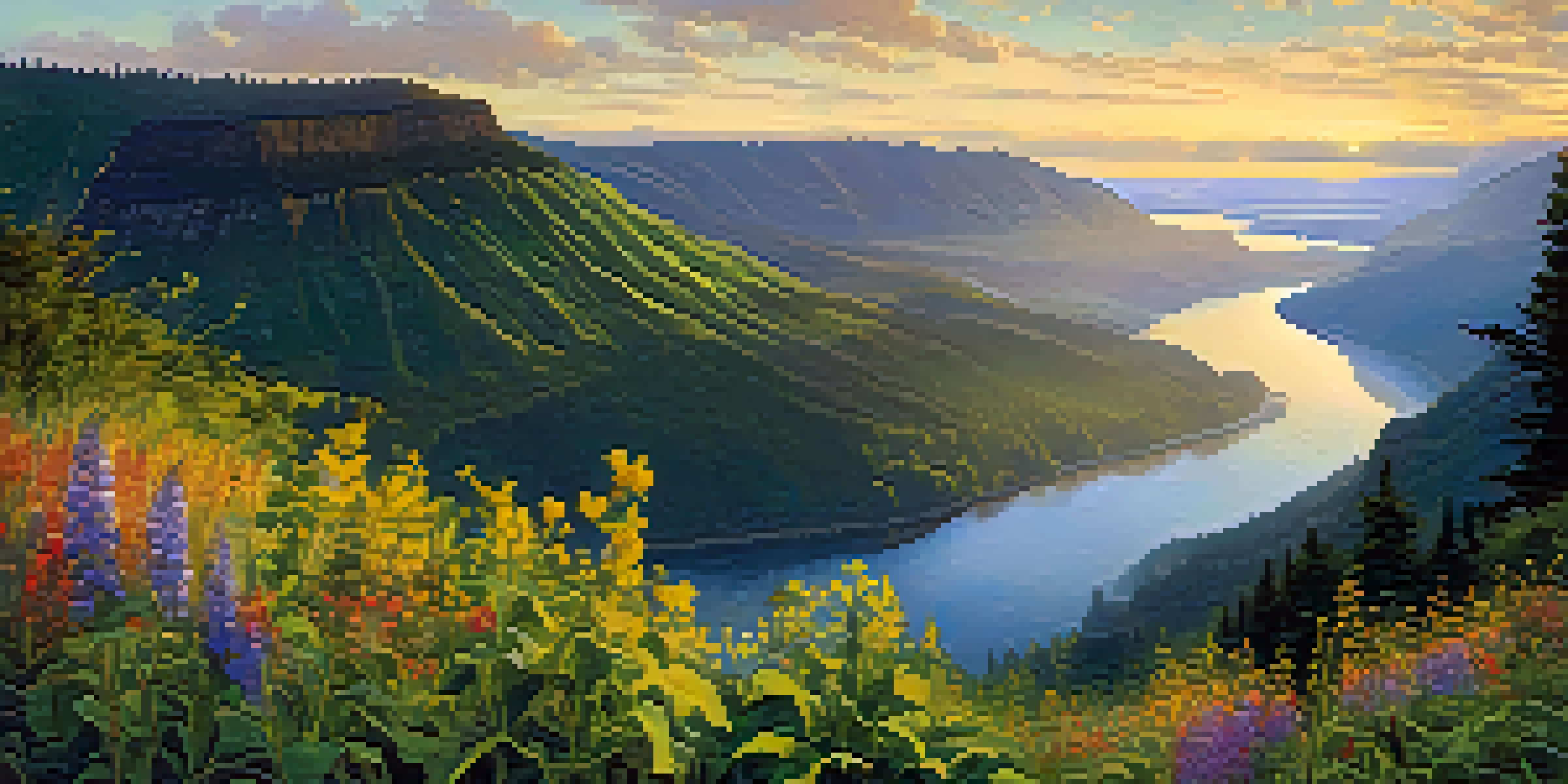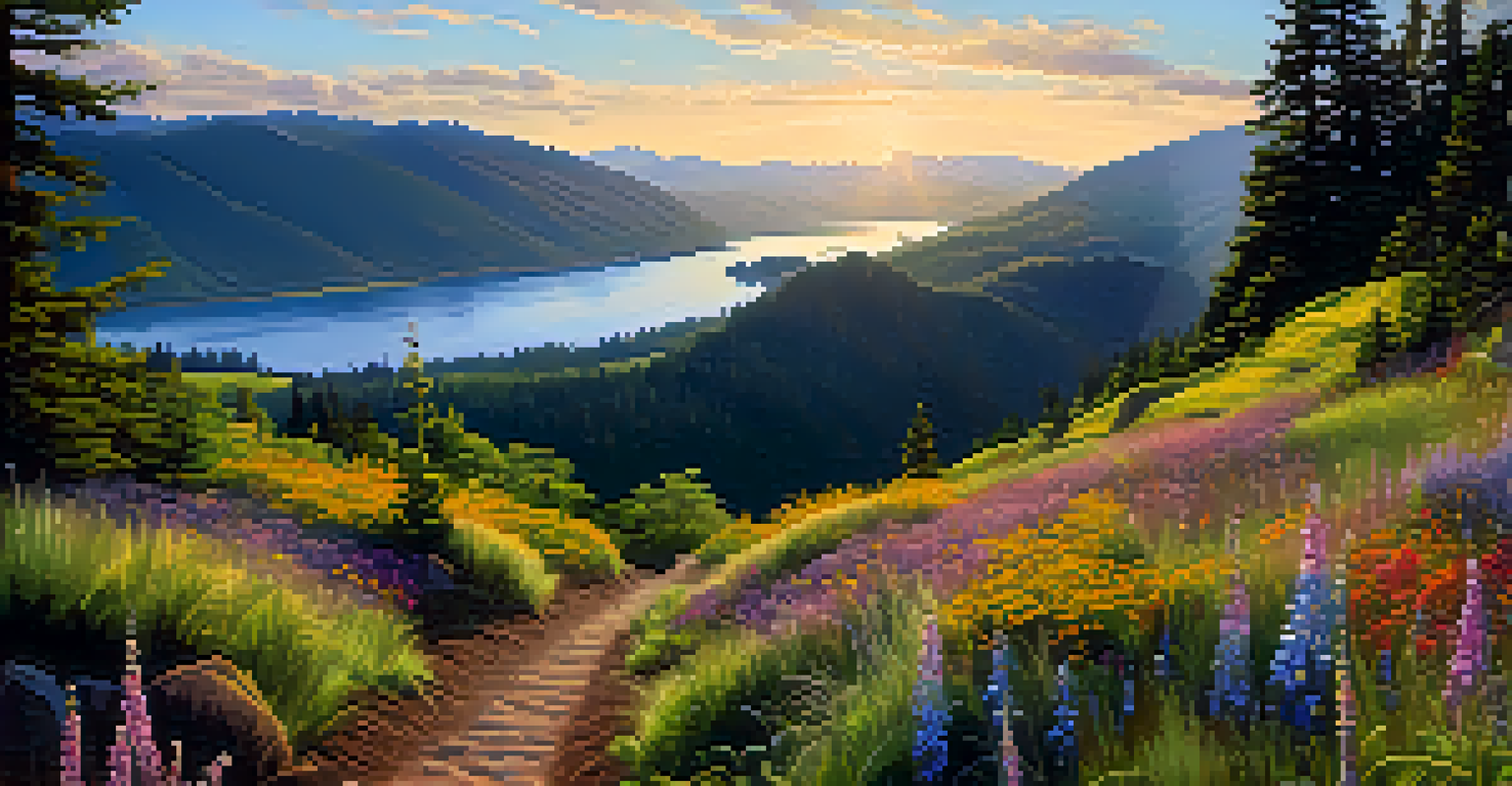The Columbia River Gorge: A Geological Wonderland in Washington

Introduction to the Columbia River Gorge
The Columbia River Gorge is a breathtaking natural wonder that stretches along the border of Washington and Oregon. Known for its dramatic cliffs and stunning waterfalls, this area offers a unique glimpse into the geological history of the Pacific Northwest. As a vital waterway, the Columbia River has shaped the landscape over millions of years, creating a diverse ecosystem that is both beautiful and biologically rich.
In every walk with nature one receives far more than he seeks.
With its lush forests, vibrant wildlife, and panoramic views, the Gorge attracts outdoor enthusiasts, photographers, and nature lovers alike. Visitors can hike, bike, or simply take in the scenery along various trails and viewpoints. It’s a place where the power of nature is on full display, making it a must-visit destination for anyone who appreciates the great outdoors.
The combination of geological formations and a rich cultural history adds depth to this stunning landscape. From Native American heritage to early explorers, the Gorge is steeped in stories that connect the land to its people. This article will dive deeper into what makes the Columbia River Gorge a geological wonder.
Formation of the Gorge: A Geological Overview
The Columbia River Gorge was formed over millions of years through volcanic activity and glacial movements. The process began with the eruption of the Columbia River Basalt Group, which laid down layers of lava rock across the region. As time passed, glaciers from the last ice age carved out the dramatic cliffs and valleys we see today, revealing a stunning landscape full of contrasts.

One of the most remarkable features of the Gorge is its unique geology, which showcases a variety of rock types and formations. For instance, the sheer cliffs of basalt rock stand in stark contrast to the softer, sedimentary layers that surround them. This interplay of different rock types tells a story of the Earth's dynamic processes, and it’s a fascinating subject for geology enthusiasts.
Stunning Geology of the Gorge
The Columbia River Gorge showcases a unique geological history shaped by volcanic activity and glacial movements, creating breathtaking cliffs and diverse rock formations.
Additionally, the Gorge serves as a living laboratory for scientists studying erosion, sedimentation, and climate change. The ongoing geological processes continue to shape the landscape, making the Columbia River Gorge an ever-evolving wonder. Understanding its geological history not only enriches our appreciation of the area but also highlights the importance of conservation.
Iconic Waterfalls: Nature's Liquid Gems
Among the many attractions in the Columbia River Gorge, the waterfalls stand out as some of the most iconic features. Multnomah Falls, the tallest waterfall in Oregon, is a breathtaking sight with its two-tiered cascade dropping 620 feet. Visitors flock to this natural wonder, often taking photos from the historic Benson Bridge that offers a perfect vantage point.
The clearest way into the Universe is through a forest wilderness.
Another enchanting waterfall is Bridal Veil Falls, known for its delicate, veil-like appearance. This waterfall is easily accessible, making it a popular spot for families and casual hikers. The serene environment surrounding the falls creates a peaceful atmosphere, inviting visitors to pause and soak in the beauty of nature.
These waterfalls are not just stunning to look at; they also play a critical role in the local ecosystem. They provide habitats for various species of fish and birds while contributing to the overall hydrology of the region. Exploring these waterfalls is a reminder of the powerful forces of nature at work in the Columbia River Gorge.
Flora and Fauna: The Gorge's Diverse Ecosystem
The Columbia River Gorge is home to an incredibly diverse range of flora and fauna, making it a hotspot for biodiversity. From towering Douglas firs to vibrant wildflowers, the plant life in the area reflects the various climates and elevations found throughout the Gorge. This diversity not only enhances the beauty of the landscape but also supports a wide array of wildlife.
Birdwatchers will delight in the variety of avian species that call the Gorge home, including eagles, hawks, and an array of songbirds. The region also hosts mammals like deer, black bears, and even the elusive bobcat. Exploring the trails provides a chance to spot these creatures in their natural habitats, creating memorable experiences for nature lovers.
Diverse Ecosystem Rich in Wildlife
Home to a variety of plant and animal species, the Gorge's diverse ecosystems offer stunning natural beauty and opportunities for nature enthusiasts to explore.
The seasonal changes in the Gorge bring about a transformation in the ecosystem. Spring blooms with colorful wildflowers, while autumn paints the landscape in warm hues. This constant change adds a layer of excitement for visitors, as each season offers new opportunities to appreciate the natural beauty of the Columbia River Gorge.
Outdoor Activities: Adventure Awaits
For adventure seekers, the Columbia River Gorge is a playground filled with outdoor activities. With over 90 hiking trails ranging from easy walks to challenging climbs, there's something for everyone. Popular trails like Angels Rest and Dog Mountain offer breathtaking views and a chance to connect with nature while getting some exercise.
In addition to hiking, the Gorge is a prime location for mountain biking, kayaking, and windsurfing. The Columbia River itself provides a perfect backdrop for water sports, drawing enthusiasts from around the region. Whether you're paddling along the river or cruising down a scenic bike path, the excitement of adventure is always close at hand.
Seasonal activities also add to the allure of the Gorge. In winter, snowshoeing and cross-country skiing become popular pastimes, while spring brings opportunities for wildflower viewing and birdwatching. The changing seasons ensure that there's always something new to explore, making the Columbia River Gorge a year-round destination for outdoor fun.
Cultural Significance: The Gorge's Rich History
Beyond its natural beauty, the Columbia River Gorge holds a rich cultural significance. For thousands of years, Native American tribes have inhabited the region and played a vital role in preserving its history and traditions. The Gorge served as a critical resource for fishing, hunting, and gathering, and many tribes continue to honor their connection to the land today.
European explorers, such as Lewis and Clark, were also drawn to the Gorge's beauty and bounty, documenting their journey through this majestic landscape. Their exploration opened the doors for settlement and development, shaping the history of the Pacific Northwest. Many historical sites and landmarks remain today, offering a glimpse into the past.
Cultural Heritage and Preservation
The Gorge's rich cultural history, linked to Native American tribes and early explorers, emphasizes the importance of preserving its natural and historical resources for future generations.
Visitors can engage with this rich cultural history through various museums, interpretive centers, and cultural events. Understanding the stories of the people who have lived in and around the Gorge adds depth to the experience of exploring this stunning natural wonder, creating a more meaningful connection with the landscape.
Preservation Efforts: Protecting the Gorge for Future Generations
As more people discover the beauty of the Columbia River Gorge, the importance of preservation becomes increasingly evident. Conservation organizations and local governments are working tirelessly to protect the natural and cultural resources of the area. Efforts include habitat restoration, invasive species management, and sustainable tourism practices that help minimize the impact on the environment.
Public awareness campaigns also play a crucial role in educating visitors about responsible outdoor practices. Simple actions, like staying on designated trails and packing out trash, help preserve the pristine beauty of the Gorge. By fostering a sense of stewardship among visitors, we can ensure that this geological wonder remains intact for future generations to enjoy.

The ongoing commitment to preservation highlights the collaborative efforts between local communities, government agencies, and environmental organizations. This united approach not only protects the unique features of the Gorge but also enhances the experience for those who come to explore its wonders. Together, we can safeguard the Columbia River Gorge as a cherished natural treasure.